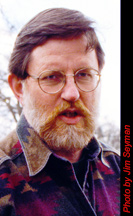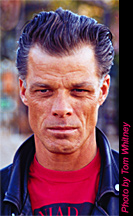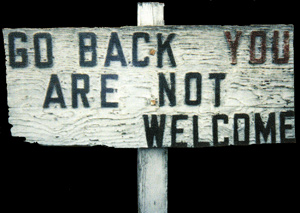
mMy artist friend Robert and I
took a trip down to his place to try to interview him for a local
rag. We pulled in to his driveway, got out of the car and as
usual stood there in awe looking around at all the wonderful
'stuff.' After a couple of minutes the doberman got up and started
our way. Here comes the dog, Robert, I said as we quickly scuffled
for the car.
mmA car pulled up behind us, then moved over along my side. The
solidly built older man cracked his window a little and I rolled
mine down. "What do you want?" he asked me. "We wanted to talk to
the person who made these incredible sculptures. We've been admiring
them for years. I really love this stuff," I told him.
m"Follow me," he said.
mFollowing the guy into his place gave me an ominous feeling,
like, What are we getting into? Is he going to shoot us or what?
We drove onto his four-acre, city-block-sized work yard and parked
behind him under a large covered area. We introduced ourselves,
then he asked, "So you boys old enough to drink?" "Sure," we said.

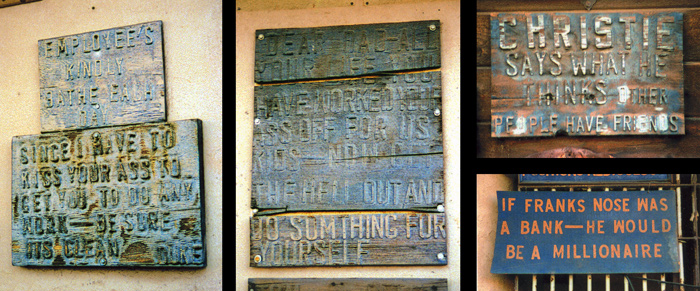
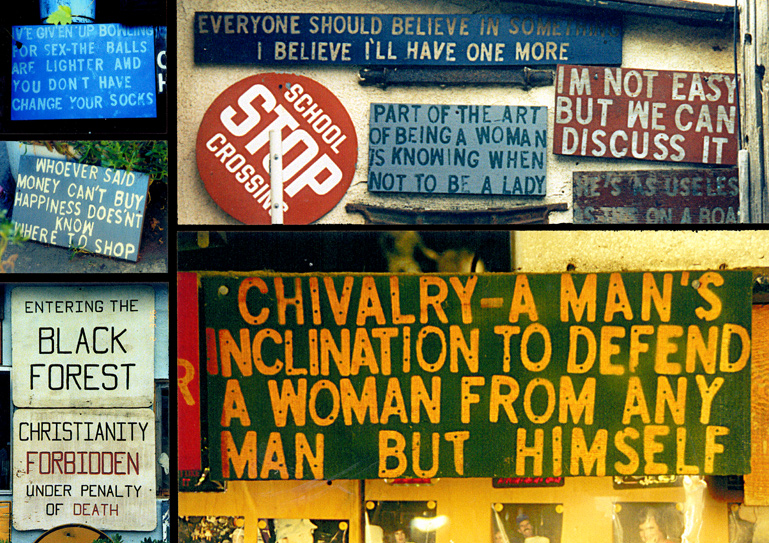
mWe followed him over to a wall
totally covered with signs and he reached down and pulled up a garage door revealing the inside of a bar and workshop area.
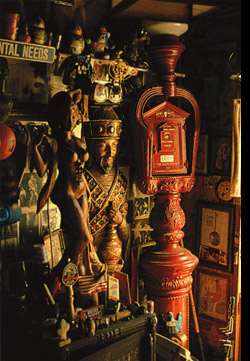 mInside the bar a 65-year-old green parrot named Rosita lived in a large metal cage positioned near a wood burning stove. There were a couple of large wooden thrones and a low-hanging ceiling with literally thousands of things hanging down suspended over your head.
mInside the bar a 65-year-old green parrot named Rosita lived in a large metal cage positioned near a wood burning stove. There were a couple of large wooden thrones and a low-hanging ceiling with literally thousands of things hanging down suspended over your head.
mSo finally, after ten years, I met Duke Cahill. His personality exuded an aura more like John Wayne than anyone else I have ever met.
mThe walls of the entire complex are covered with photos, posters, commercial logos, 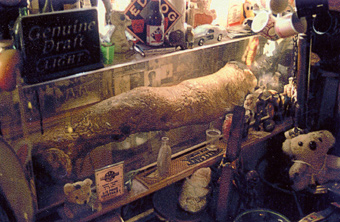 curios and signs and objects from the several bars and restaurants Duke has owned over the years including the whale male appendage you see on the right. There are street signs from all over California, plants, cacti and maze-like passageways winding through the complex.
curios and signs and objects from the several bars and restaurants Duke has owned over the years including the whale male appendage you see on the right. There are street signs from all over California, plants, cacti and maze-like passageways winding through the complex.
mThere are a lot of '30s- and '40s-era fight photo-graphs and posters displayed. These are from the times when Duke was a heavyweight boxer and in the merchant marine challenged the champion of almost every port he landed in as well as boxing his way across America to a 62 win, 2 (technical) loss record.
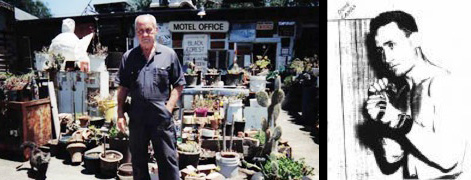
These two photographs above are from an excellent article by Sacramento writer Ken Magri that contains more about the facts of Cahill's life than Steve's article, that focuses more on Duke's art.
As Ken notes, Cahill died in 2003. Ken's article can be accessed here:
http://blogs.myspace.com/index.cfm?fuseaction=blog.view&friendId=365102386&blogId=516812757

mCahill continued to add rooms for forty years, filling his walls, ceilings and work yard with objects and images. Like the Louvre, it would take more than one day to see it all. You can even take a spiral staircase to the top of a tower and gaze out a periscope at the neighboring modern suburbia encroaching its way up to his once remote and solitary walls.

mThe art is divided into three types: the fiberglass and plaster sculptures, the metal wall assemblages and Duke's signs.
mMost noticeable at first because of their large size are the fiberglass and plaster sculptures. A row of creatures faces west, consisting of a fifteen-foot pink alien man, a twelve-foot cat, ten-foot dog, a large prehistoric-looking bird with a large egg and a huge plaster jug embellished with metal tools pushed into its outer surface.
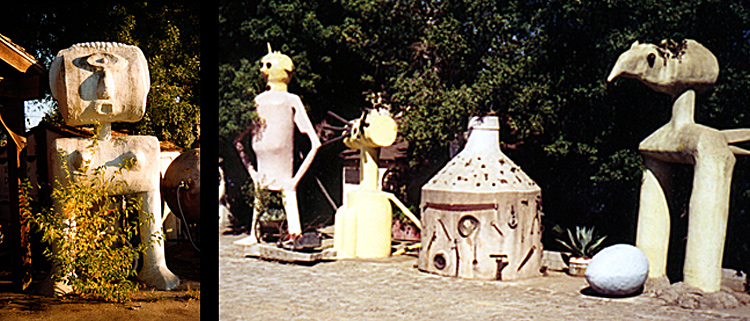
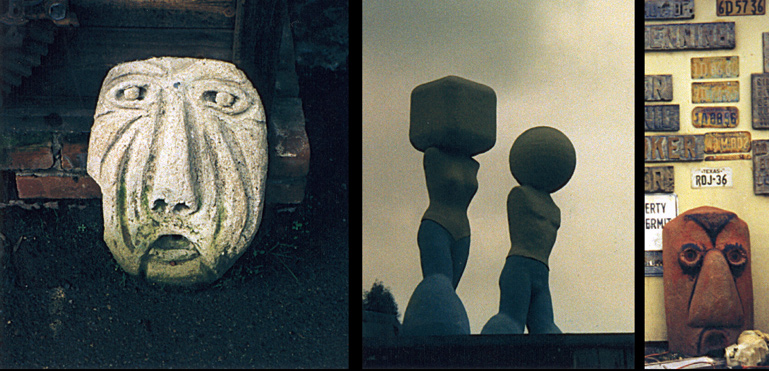 mAnother twenty-foot alien woman stands off to the side with a giant whale that rests on top of a barn-like structure that was once home for a couple of goats and ducks. A trio of sphere-headed aliens stand on top of a boat peering down at you, monitoring your actions at the entry gate.
mAnother twenty-foot alien woman stands off to the side with a giant whale that rests on top of a barn-like structure that was once home for a couple of goats and ducks. A trio of sphere-headed aliens stand on top of a boat peering down at you, monitoring your actions at the entry gate.
 m
m
mA huge salvage yard is located a couple of miles away where Duke would find objects to use for his metal sculptures.

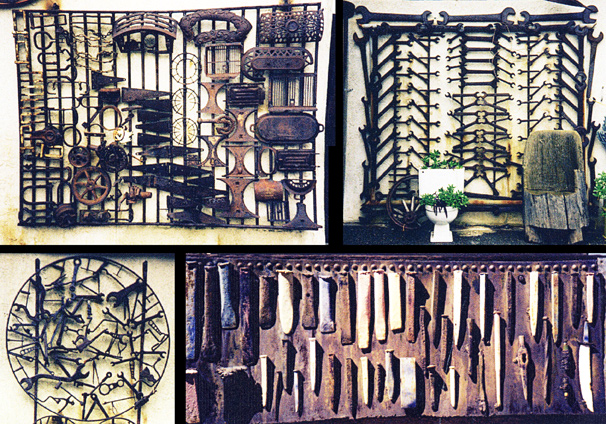
mThere are about fifty wall assemblages hanging around the work yard made of rusted and painted metal tools welded together. A seven-foot by seven-foot metal wall piece composed of various sized rusted wrenches welded together creates a natural-mechanical rhythm by utilizing the repetition of images and tools and is somewhat Arman-esque. The enormous brightly painted metal gates are particularly beautiful. Some pieces have a minimal amount of color painted on objects, while most remain entirely covered with their rich rust patina.
mThe sculptures and metal work evolved out of a need for Duke to keep his crew of working men busy when weather conditions were not optimum for one of his businesses producing fiberglass swimming pools.
mDuke told me he could use fiberglass only if there was no wind or rain. The art is a result of collaborating with his crew using metal shapes and working tools for materials that they came into contact with daily in the construction field, and using the fiberglass they were so familiar with.
mThey built, constructed, crafted and created a truly working man's aesthetic of 'Work Art' covering the entire yard. This industrial age worker's aesthetic has a purity similar to the cave wall artists reflecting the earth's animals of that time using pigments from the earth.
mLike any culture, being an American can be a somewhat ambivalent experience: but the heroic voices, Duke's among them, that have emerged from our culture are among the greatest on the planet.
mFinally, the last and most personal form of his art are Duke's signs. He used them as a vehicle to communicate humorous sayings he either invented or borrowed and to rib friends and workers. These signs expose the truth according to Cahill.

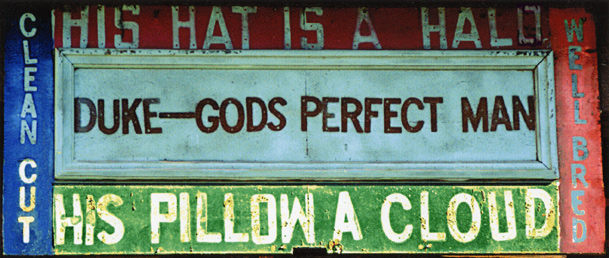
mBack in the 1970s a curator borrowed a couple of pieces for a show that toured the country. Two years later Duke called him up to ask where they were. They were being exhibited down at the Oakland Museum at that time, so he went there and picked them up. He told me that he liked having his stuff around him and missed seeing the work.
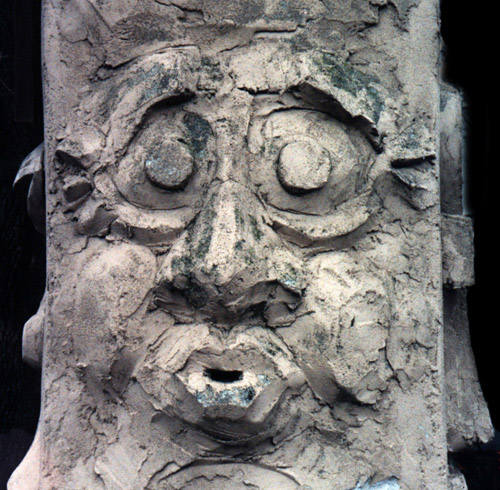
mI brought my video camera to his place once. He asked me why I brought it. I told him I wanted to video some of his work. So that's what they call it? Yeah, that's what they call it, I said. Ya know, Duke, you make some of the greatest art I've ever seen, I told him. Have another drink, kid, he said.
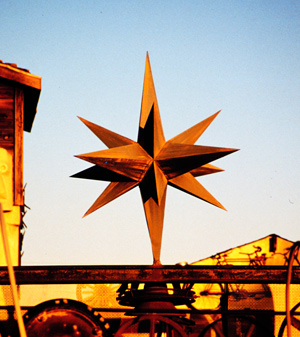

Steve Vanoni and I were habitués of the same café in Sacramento and got together one day to visit Duke Cahill's place with Stacey Robertson. I took many photographs to accompany Steve's writing in hopes that we might attract the attention of museum directors, gallery owners and book publishers to Duke Cahill.
Now with the Internet we have a way of displaying, and with pixels, preserving Duke's memorable work
in our Internet Museum of Forgotten Artists. - Tom Whitney
Tom on the left, Steve on the right in the late 1990s.
